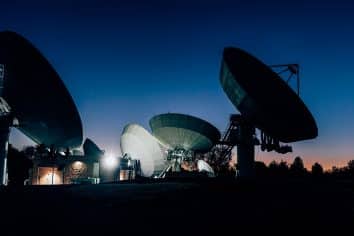By Peter Ostapiuk, Head of Media Services, Intelsat
The options available to broadcasters for getting live video from the scene of a breaking news or sporting event back to the studio or production facility have never been greater—or more confusing! While newsgathering trucks, equipped with conventional satellite or microwave broadcast transmission gear remain a high-quality option, some broadcasters rely on accessing lower cost cellular networks to transmit digital video.
In place of traditional broadcast transmission equipment like satellite or microwave, broadcasters use bonded cellular technology to send video signals over the same wireless networks we use for voice and data communications. Because of its ease of use and minimal equipment requirements, cellular bonding has enabled local TV stations to cover news events that they might have otherwise missed. For example, a reporter with a small equipment backpack can drive through a heavy snowstorm, giving viewers a preview of the road conditions, or arrive in a car at the scene of a building fire and immediately begin reporting and sending live video back to the studio.
The challenge is that as more broadcasters and citizen journalists contend for available bandwidth from a very specific location, the wireless networks are often not able to handle the surges in video traffic around events or circumstances that drive high mobile usage. This congestion slows network throughput as TV reporters contend/compete for the wireless bandwidth from regular cellular customers and even emergency personnel responding to the event, putting the quality and timeliness of the live reporting at risk. This compares unfavorably to the quality and responsiveness of dedicated satellite links.
Seeking a simple news gathering solution with the reliability of satellite, Intelsat recently partnered with a major provider of network blending technology, Dejero Labs, to create Dejero CellSat, a blended cellular and Ku-band satellite solution that takes the best attributes of both IP transmission paths and blends them into one service.
Dejero CellSat is designed to take the overflow of IP packets cellular networks can’t accommodate, by blending Ku-band satellite with up to six cellular signals at a time. This gives broadcasters the bandwidth they need to go live with a robust, high-quality video signal from any location, even when other users are competing for the same cellular bandwidth. The software uses complex algorithms to manage the fluctuating bandwidth of individual cellular connections and to dynamically allocate satellite bandwidth for optimal performance. The software also communicates with the antenna auto-acquire system to simplify the satellite connection process.
To take advantage of the CellSat service, users will need both mobile service from multiple cellular providers and a satellite terminal at the location of the live feed. CellSat is an on-demand service that does not require the broadcaster to reserve or book bandwidth before use. Cloud-based monitoring can be managed from a web browser, allowing users to set up and remotely control transmitters and receivers, monitor and route traffic, view performance data, and generate usage and billing reports to help manage operational costs.
The odds are that, whether reporting live from a disaster zone, breaking news or live events such as football games and music concerts, consumers will more than likely use their smartphones to capture every moment, creating congestion on the public cellular networks. Dejero CellSat’s unique ability to combine both the convenience of cellular networks and the ubiquity and robustness of satellite networks assures that broadcasters have the bandwidth to cover an event with broadcast-ready quality and reliability.
Related Posts

News Release
Intelsat Exclusive Satellite Provider for Delivery of PBS Content April 17, 2023



